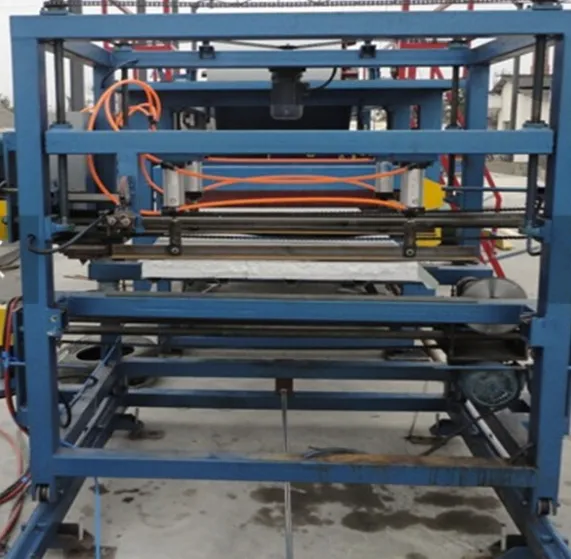
The global construction industry faces a dual crisis: skyrocketing energy expenses and tightening carbon regulations. Traditional building methods hemorrhage thermal efficiency through inadequate insulation, forcing HVAC systems to work overtime. Enter the PU sandwich panel line – a technological tour de force redefining structural efficiency. These automated systems transform raw materials into insulated building envelopes with precision-engineered cores of polyurethane foam, creating continuous thermal barriers that slash energy leakage. For warehouses battling refrigeration costs or factories facing energy audits, PU sandwich panel machines deliver unprecedented R-values exceeding 40 per inch. This article reveals how integrated PU sandwich panel production lines transform construction from energy liability to efficiency asset, proving superior insulation isn't just sustainable – it's profitable.

PU sandwich panel lines orchestrate a symphony of precision engineering to create flawless insulated barriers. The process initiates with coil decoilers feeding metal skins into the system. A roll forming machine equipped with 14-16 forming stations shapes panels at 5-7m/min speeds using 75mm diameter 45# steel shafts, handling material thicknesses of 0.3-0.8mm within a 950-1250mm width envelope. Simultaneously, a compound forming machine laminates top/bottom sheets to insulation cores via electronically controlled 50-roller stations. Glue mixing devices deploy calculated pumps for uniform adhesive distribution – surpassing spray methods in consistency while eliminating airborne pollutants. Guiding mechanisms with stainless steel rollers ensure perfect alignment, while electrical infrared heaters maintain optimal bonding temperatures regardless of ambient conditions. The entire 9525×1450×1070mm operation consumes just 5.5kW for roll forming, with auxiliary systems adding minimal energy overhead.
PU sandwich panel machines deliver compounding energy savings through physics-driven design. The continuous polyurethane core achieves 0.022 W/mK thermal conductivity – 50% lower than EPS alternatives. Automated production ensures consistent foam density between 38-42 kg/m³, eliminating weak spots that cause thermal bridging. Real-world data shows 60% reduction in HVAC loads for structures built with these panels. Refrigerated warehouses report $18/m² annual cooling savings, while manufacturing facilities cut peak energy demand by 30%. The production process itself exemplifies efficiency: with total power consumption under 31kW (including 12kW heating and 7.5kW cutting systems), the line produces 4,800 m² of panels daily. Compared to traditional construction, this represents an 85% reduction in embodied energy per square meter of building envelope.
A complete PU sandwich panel production line integrates specialized subsystems for turnkey operation:
Core Fabrication Modules
Bonding & Finishing Systems
Material Handling
PU sandwich panel lines incorporate advanced cutting systems that minimize material waste while ensuring thermal continuity. Two cutting methodologies serve diverse applications: die cutters for standard rectangular panels, and milling cutters for complex profiled edges. The cutting sequence follows a strict protocol: length setting → tight-motion synchronization → precision cut → pressure release → system reset. Operators choose between semi-automatic control (limit switch regulated) or full PLC automation with touchscreen interfaces and encoder precision for custom orders. The hydraulic cutting system (7.5kW) employs frequency conversion speed control and electromagnetic pneumatic regulation, achieving ±0.5mm tolerances. This precision prevents insulation gaps at panel joints – critical for maintaining continuous thermal barriers that block energy transfer. Dust extraction systems maintain blade sharpness through 50,000 cycles, while infrared sensors verify squareness before each cut.
Computer-controlled metering pumps inject precise polyol-isocyanate ratios, while temperature-stabilized mixing heads ensure homogenous foam expansion across panel widths.
Integrated curving attachments cold-form panels to 3m radii without compromising foam integrity, enabled by programmable pressure rollers.
The heat transfer oil circulation system maintains the temperature of the roller group above 10℃. The polyurethane raw material storage tank is equipped with electric heating (adjustable from 0 to 50℃), and the deviation of the foaming reaction rate is less than 3%.
Infrared pre-heaters elevate skin temperatures above dew points, while moisture-resistant glue formulations prevent delamination in 95% RH conditions.
Daily blade inspections, weekly hydraulic fluid checks, and monthly linear guide lubrication ensure ±0.3mm cutting accuracy through 10,000+ cycles.
The energy efficiency race has a clear finish line: factories without PU sandwich panel lines will face extinction. While competitors hemorrhage profits through rising utility bills and carbon taxes, your operation could be constructing net-positive buildings that generate energy credits. Imagine locking in 70% lower HVAC costs for clients while completing projects 50% faster – not through corporate promises, but physics-proven panel performance. The PU sandwich panel machine in your facility isn't equipment; it's a profit-printing press that amortizes itself in 14 months through energy savings alone. Delay equals surrender as forward-thinking builders monopolize green construction incentives. Industry leaders already deploy fully automated lines producing 1.2 million m² annually, securing government infrastructure contracts. For ambitious firms, modular systems offer scalable entry with energy-based financing: payments tied to documented client savings. This isn't about keeping pace – it's about dominating the sustainable construction revolution. Demand an efficiency audit. Calculate your clients' potential energy reductions. Analyze competitors' thermal imaging reports. The conclusion is inescapable: lead or perish. Contact a PU sandwich panel production line manufacturer within 72 hours and construct your legacy as an efficiency pioneer.